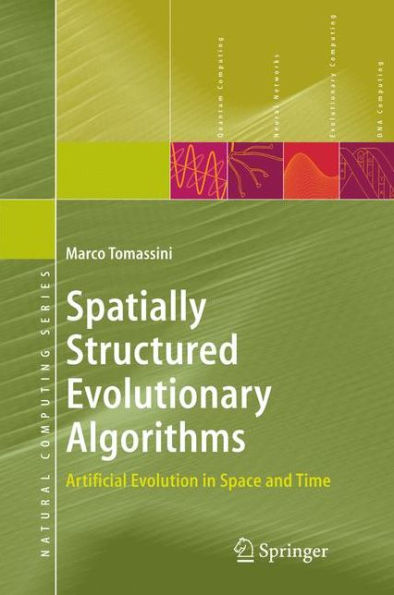Evolutionary algorithms (EAs) is now a mature problem-solving family of heuristics that has found its way into many important real-life problems and into leading-edge scientific research. Spatially structured EAs have different properties than standard, mixing EAs. By virtue of the structured disposition of the population members they bring about new dynamical features that can be harnessed to solve difficult problems faster and more efficiently. This book describes the state of the art in spatially structured EAs by using graph concepts as a unifying theme. The models, their analysis, and their empirical behavior are presented in detail. Moreover, there is new material on non-standard networked population structures such as small-world networks.
1101308960
The book should be of interest to advanced undergraduate and graduate students working in evolutionary computation, machine learning, and optimization. It should also be useful to researchers and professionals working in fields where the topological structures of populations and their evolution plays a role.
Spatially Structured Evolutionary Algorithms: Artificial Evolution in Space and Time
Evolutionary algorithms (EAs) is now a mature problem-solving family of heuristics that has found its way into many important real-life problems and into leading-edge scientific research. Spatially structured EAs have different properties than standard, mixing EAs. By virtue of the structured disposition of the population members they bring about new dynamical features that can be harnessed to solve difficult problems faster and more efficiently. This book describes the state of the art in spatially structured EAs by using graph concepts as a unifying theme. The models, their analysis, and their empirical behavior are presented in detail. Moreover, there is new material on non-standard networked population structures such as small-world networks.
The book should be of interest to advanced undergraduate and graduate students working in evolutionary computation, machine learning, and optimization. It should also be useful to researchers and professionals working in fields where the topological structures of populations and their evolution plays a role.
54.99
In Stock
5
1

Spatially Structured Evolutionary Algorithms: Artificial Evolution in Space and Time
193
Spatially Structured Evolutionary Algorithms: Artificial Evolution in Space and Time
193Paperback(Softcover reprint of hardcover 1st ed. 2005)
$54.99
54.99
In Stock

Product Details
| ISBN-13: | 9783642063398 |
|---|---|
| Publisher: | Springer Berlin Heidelberg |
| Publication date: | 12/15/2010 |
| Series: | Natural Computing Series |
| Edition description: | Softcover reprint of hardcover 1st ed. 2005 |
| Pages: | 193 |
| Product dimensions: | 6.10(w) x 9.25(h) x 0.02(d) |
About the Author
From the B&N Reads Blog
